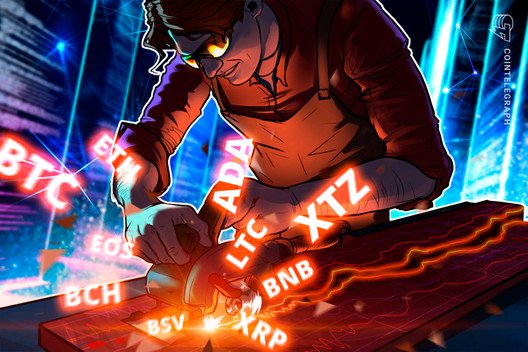10 practices crypto can borrow from TradFi to better protect customers
Crypto pioneers and decentralized finance companies often talk about their commitment to opening up financial opportunities to underserved populations, but that’s only half the battle in achieving success for this fledgling industry. Global consumers must be confident that the funds they invest with crypto companies are safe, secure and accessible for withdrawal when desired.
While traditional finance companies may not offer all the new and unique opportunities and potential of DeFi, what they do enjoy is a long history and established methods for protecting consumers’ investments — and maintaining their trust. Below, 10 members of Cointelegraph Innovation Circle discuss some helpful things the crypto industry can learn from the TradFi industry, including practices DeFi companies should consider adopting and adapting for their own customer base.
Establishing an insurance system
DeFi companies don’t have the FDIC insurance that TradFi companies enjoy, but that shouldn’t stop us from creating our own. Functioning insurance systems that use smart contracts to automatically issue payments to affected parties is the best way to ensure safety and security. TradFi enjoys a bureaucratic system to make this happen; we can do the same, and far more quickly, using decentralized systems. – Budd White, Tacen
Educating consumers about essential facts
Before investing in cryptocurrency, it is very important that the consumer 1) is okay with handling their own money in a decentralized world, as opposed to the centralized world of financial institutions; 2) has researched reputable wallets and exchanges before sending crypto or money to them; and most of all 3) knows this truth: “not your keys, not your coin.” It’s essential to educate consumers about these facts in the decentralized world of finance. – Chris Groshong, CoinStructive, Inc.
Implementing best practices from day one
An ounce of prevention is worth a pound of cure. A key lesson from traditional finance is that by the time something unexpected happens, it’s usually far too late to start implementing best practices. With that in mind, Web3 businesses should prioritize regulatory compliance and protecting user funds from day one. – Wolfgang Rückerl, ENT Technologies AG
Creating and adhering to regulatory guidelines
The crypto industry should look to traditional financial institutions to understand how they safeguard funds through regulatory oversight and compliance. Such traditional institutions adhere to strict rules, guidelines and regulations. The cryptocurrency industry could look to implement similar guidelines while keeping the spirit of DeFi. – Theo Sastre-Garau, NFTevening
Setting up safeguards to reassure the public
Proper insurance is something that would be very useful in centralized finance (to guard against theft and misuse) and even in DeFi (to guard against hacks and exploits). If we could solve insurance for crypto and fiat client funds in an effective way, that would put many people and institutions at ease. – Brian D. Evans, ReBlock Ventures
Join the community where you can transform the future. Cointelegraph Innovation Circle brings blockchain technology leaders together to connect, collaborate and publish. Apply today
Ensuring customer assets are not inappropriately commingled
The safety of customer funds is both a cybersecurity and an accounting issue. Having proper mechanisms to ensure that no customer’s assets are commingled in a manner not consistent with a custodial mandate is key. Also, it’s paramount to understand that only banks are designed to run on fractional reserves. Crypto managers must learn the differences between the nature of their firms and TradFi organizations. – Carlos Gomez, Belobaba Crypto Fund
Establishing safety nets to protect against bad actors
One of the major differences between TradFi and DeFi is the lack of safety nets in the latter. Where banks and brokerage firms enjoy, respectively, FDIC and SIPC services, crypto companies and users remain vulnerable to bad actors. While crypto custody is unique, for the industry to gain equal footing alongside legacy systems, such protections must be considered for all participants. – Oleksandr Lutskevych, CEX.IO
Expanding access and focusing on the user experience
In TradFi, users’ funds are generally secure and easy for them to access; crypto has struggled to find this balance. The safest way for users to engage with crypto is through DeFi solutions, as opposed to CeFi, but there are high barriers to entry. To ensure the security of client funds, we need to make DeFi more accessible and improve user experience and interface. – Anthony Georgiades, Pastel Network
Imposing consequences for fraud
Don’t let bad actors get away with it. There are already many laws on the books that speak to the commingling of funds, risk disclosures and various forms of financial fraud. Enforcing these laws will at least reduce the crimes that happen in the light of day, such as those that happened with FTX and SBF. TradFi has shown us that consequences are required for moderation. – Arie Trouw, XYO
Not resisting financial controls
Traditional financial controls are there for a reason, and they emerged because of historical events. The “college dorm room” and “anti-establishment” mentalities about money have to go. – Zain Jaffer, Zain Ventures
This article was published through Cointelegraph Innovation Circle, a vetted organization of senior executives and experts in the blockchain technology industry who are building the future through the power of connections, collaboration and thought leadership. Opinions expressed do not necessarily reflect those of Cointelegraph.
Learn more about Cointelegraph Innovation Circle and see if you qualify to join.









